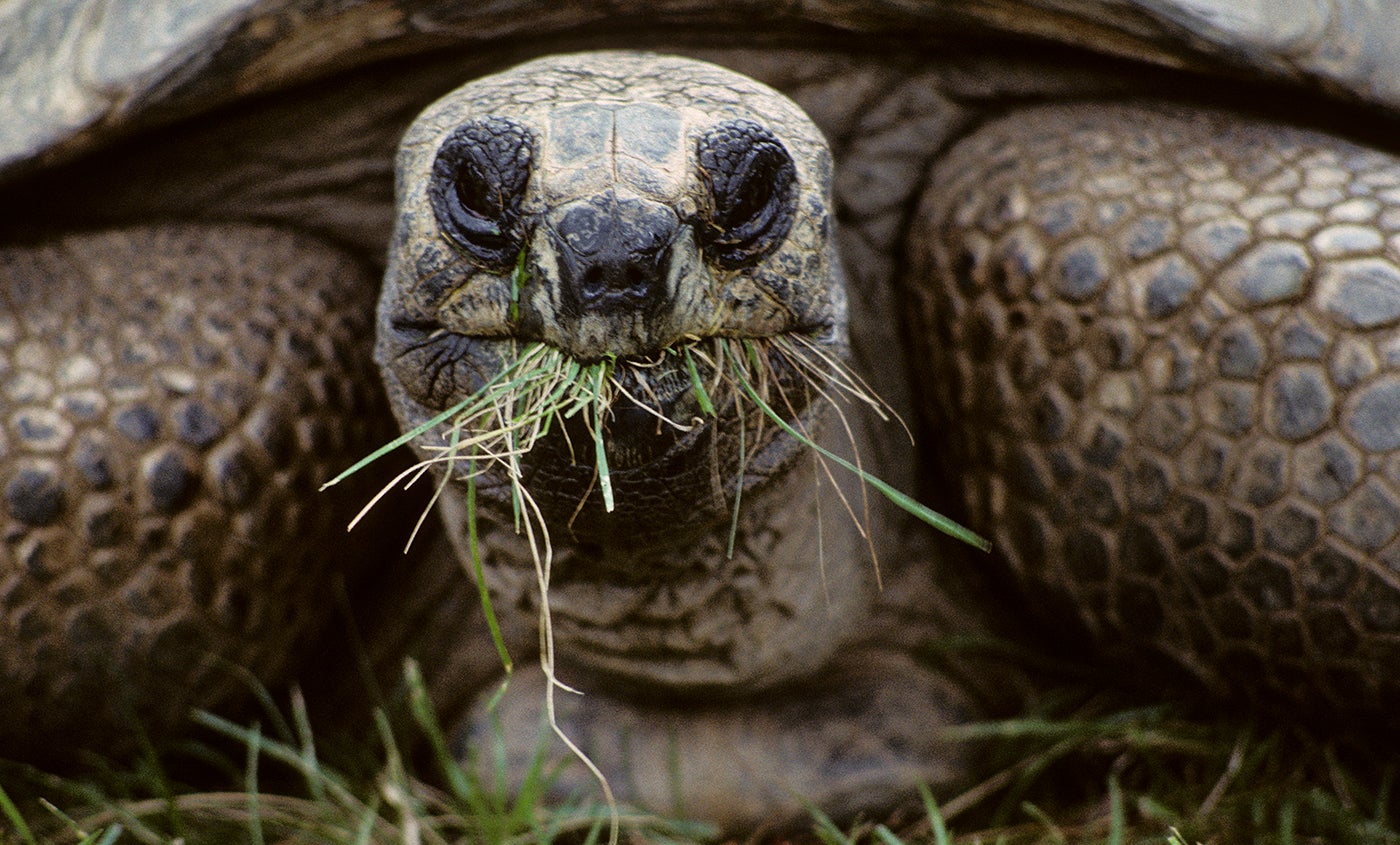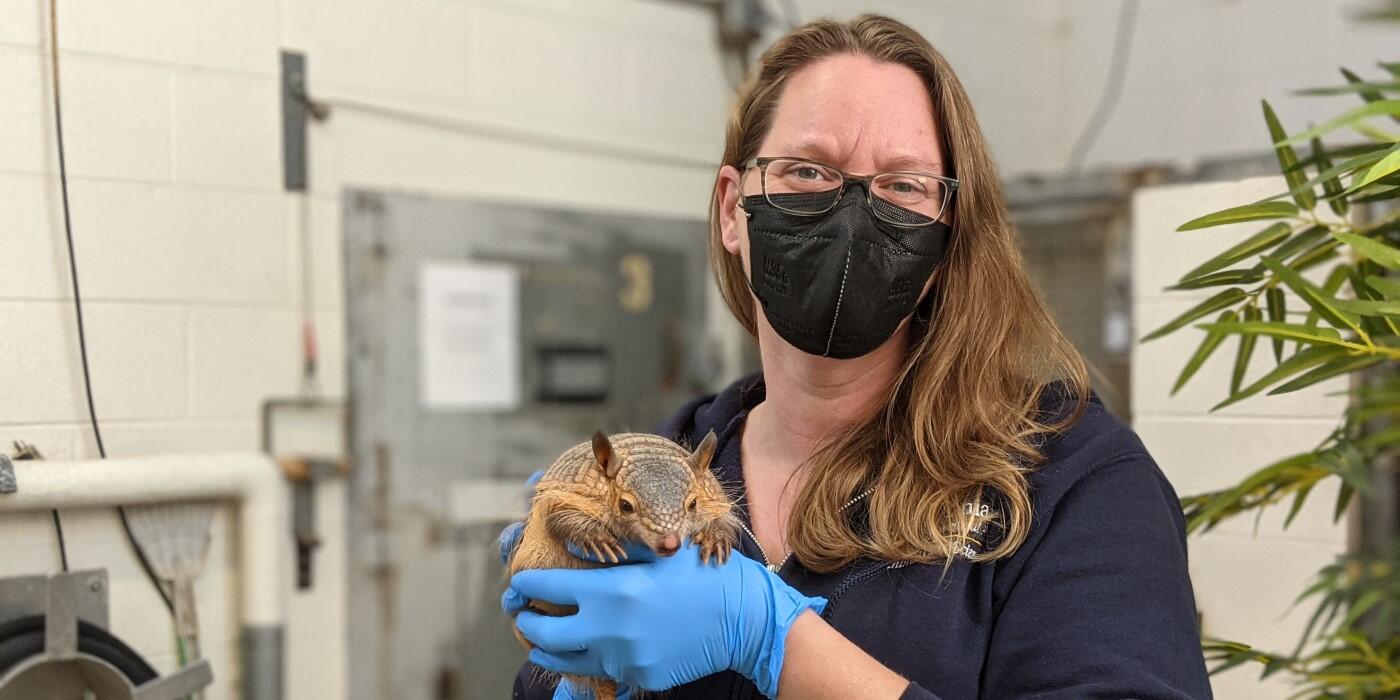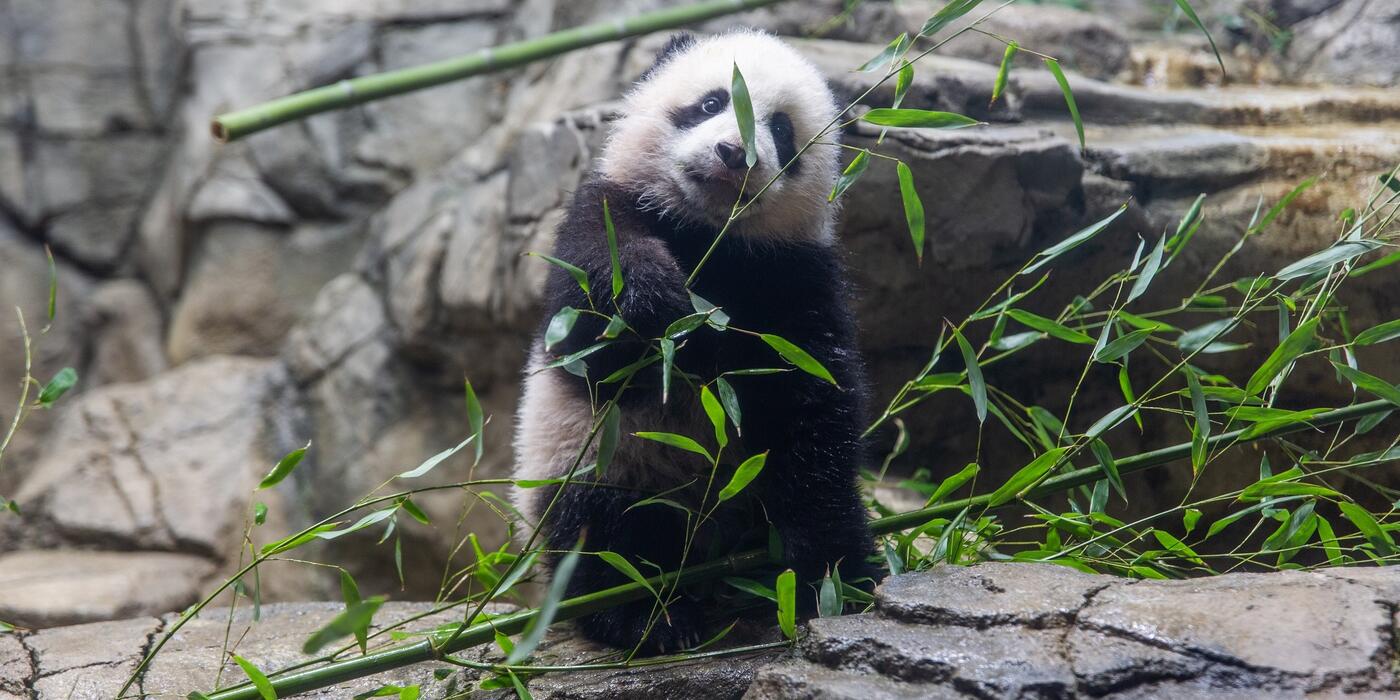Animal Nutrition Science

The Department of Nutrition Science uses best-practices and conducts scientific research to provide the best diets to the animals in the Zoo's care. Providing the best diets means not only formulating appropriate diets, but also includes performing the research that provides the information keepers use to make rational, science-based nutrition decisions. This includes everything from scientific diet formulation to assembling and delivering diets, to conducting the research behind the diets, to actual acquisition of diet ingredients.
In the early 1980s, the Smithsonian's National Zoo was the first zoo in the U.S. to hire a research nutritionist. The commitment to promoting and practicing cutting edge wildlife nutrition for the Zoo's birds, mammals, reptiles, amphibians, fish and invertebrates continues today. The Zoo’s Department of Nutrition comprises two clinical nutritionists, a commissary manager, a laboratory manager, a food service specialist, a group of dedicated keepers, and a management support specialist. Nutrionists work closely with the other animal care service departments and in coordination with the curatorial and keeper staff to ensure appropriate nutrition for all of the Zoo's animals.
Program elements within the Department of Nutrition Science include:
- Clinical Nutrition: Clinical nutrition includes balancing diets for all of the animals based on life stages, health issues and transitions from one facility to another.
- Carcass Feeding: The Zoo strives to provide the very best in animal care to the species in its charge. "Carcass feeding"—feeding portions of meat or whole (dead) prey— is one of the ways keepers and nutritionists continually enrich animals' lives; to support an animal's physical, mental, and social health and to stimulate natural behaviors in the wild. Many animals at the Zoo receive whole prey in their diets. Reptiles, birds and smaller mammal species are fed whole prey including mice, rabbits and fish. African lions, cheetahs, vultures and other carnivores are fed portions of whole carcasses. As with all food for the Zoo's animals, the meat comes from reputable USDA-inspected facilities. While it may seem somewhat unappetizing to us humans, feeding large carnivores this way is in line with the best available animal care science. Although the carnivores' diets are always nutritionally complete, providing an entire portion of a carcass, including bones, skin, connective tissue, and organs, is beneficial to carnivores, who evolved to eat exactly this way. Eating carcasses takes a lot more time, energy, and work to eat and digest, rather than butchered (or processed) meat. This extra work has been scientifically shown to improve oral and digestive health, as well as muscle tone. Carcass feeding also stimulates natural mental and physical behaviors—including natural social feeding behaviors some animals, like lions, exhibit in the wild. For visitors who may be sensitive to large carcass feeding, signage near animal exhibits will be posted to notify visitors of the carcass feeding schedule.
- Commissary Operations: The Commissary is a nearly-centralized operation, which means all of the diets for the animals in the collection are weighed by the commissary staff specifically for individual animals and/or groups of animals.
- Forage and Land Management: The Smithsonian's National Zoo and Conservation Biology Institute is the only zoo in the U.S. to grow all of its own hay forages, increasing the responsibility to be good stewards of land resources. The Department of Nutrition manages not only the Zoo's hay production, but also the land upon which the hay is grown. The Zoo grows all of the bamboo (and other browse species) to feed its extensive collection of herbivores.
- Research: Four labs at the Zoo are dedicated to nutrition-related analysis, allowing nutritionists the ability to test for a myriad of nutrients on site. This contributes to quality control of feeds and applied zoo-based research, and contributes greatly to the goals of numerous visiting researchers who collaborate with the Zoo and use the labs annually.
- Outreach and Education: As the nation’s Zoo, part of the mission is to support those seeking information and assistance within the realm of zoo and wildlife nutrition. This includes everything from helping colleagues with specific nutrition issues within their collections, to participation in professional zoo and wildlife nutrition groups nationally and internationally, to teaching classes at a variety of venues (from nature centers, libraries, and elementary schools to college campuses). Zoo nutrition scientists now teach a week-long course at the Smithsonian-Mason School of Conservation for students and professionals interested in pursuing careers in zoo nutrition.
- Milk Repository: The Zoo also houses the most extensive collection of exotic animal milks in the U.S. Physical samples are used to collect invaluable data as scientists continue to discover the secrets of lactation. Practically, this information assists researchers and colleagues in their efforts to raise neonatal mammals (and birds!) that may need hand-rearing.
Featured Stories
Solving Animals' Nutrition Needs ›
Get a taste of the challenges animal nutritionist Erin Kendrick faces as she formulates diets for all animals at the Smithsonian’s National Zoo.
The Science Behind Animal Snacks ›
How do you create a menu that is pleasing to the palates of giant pandas, flamingos and fishing cats?

